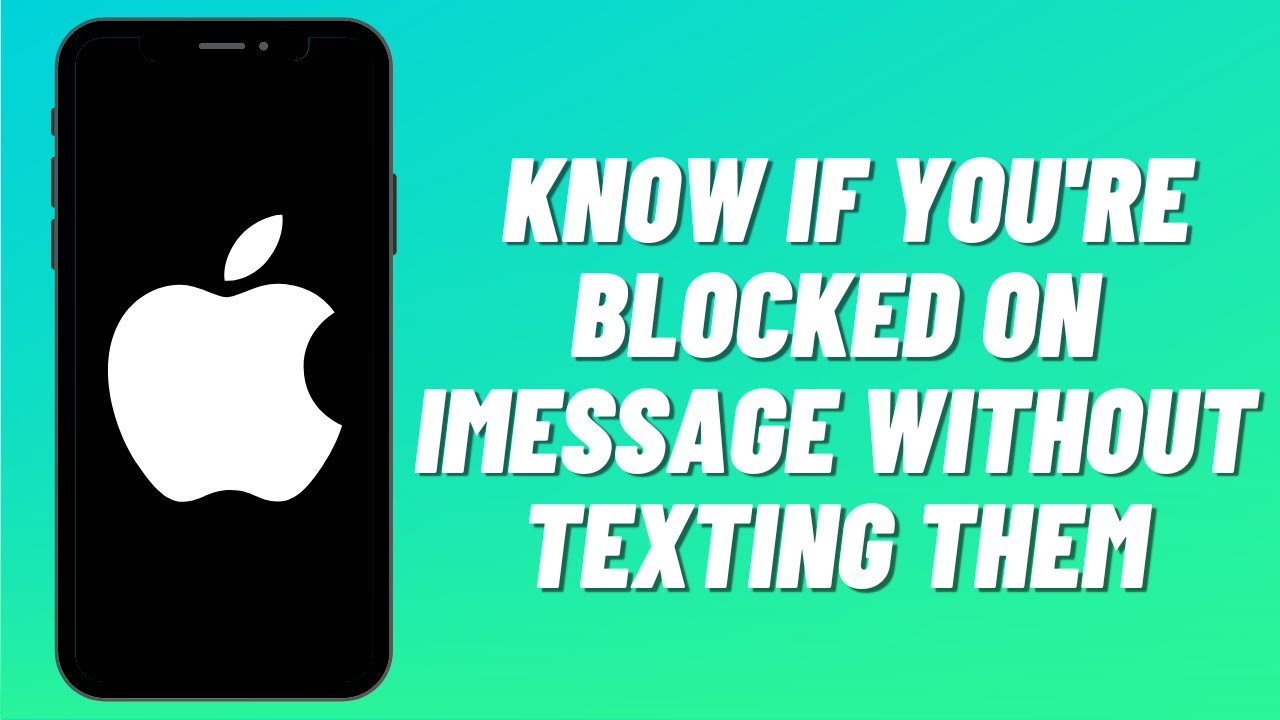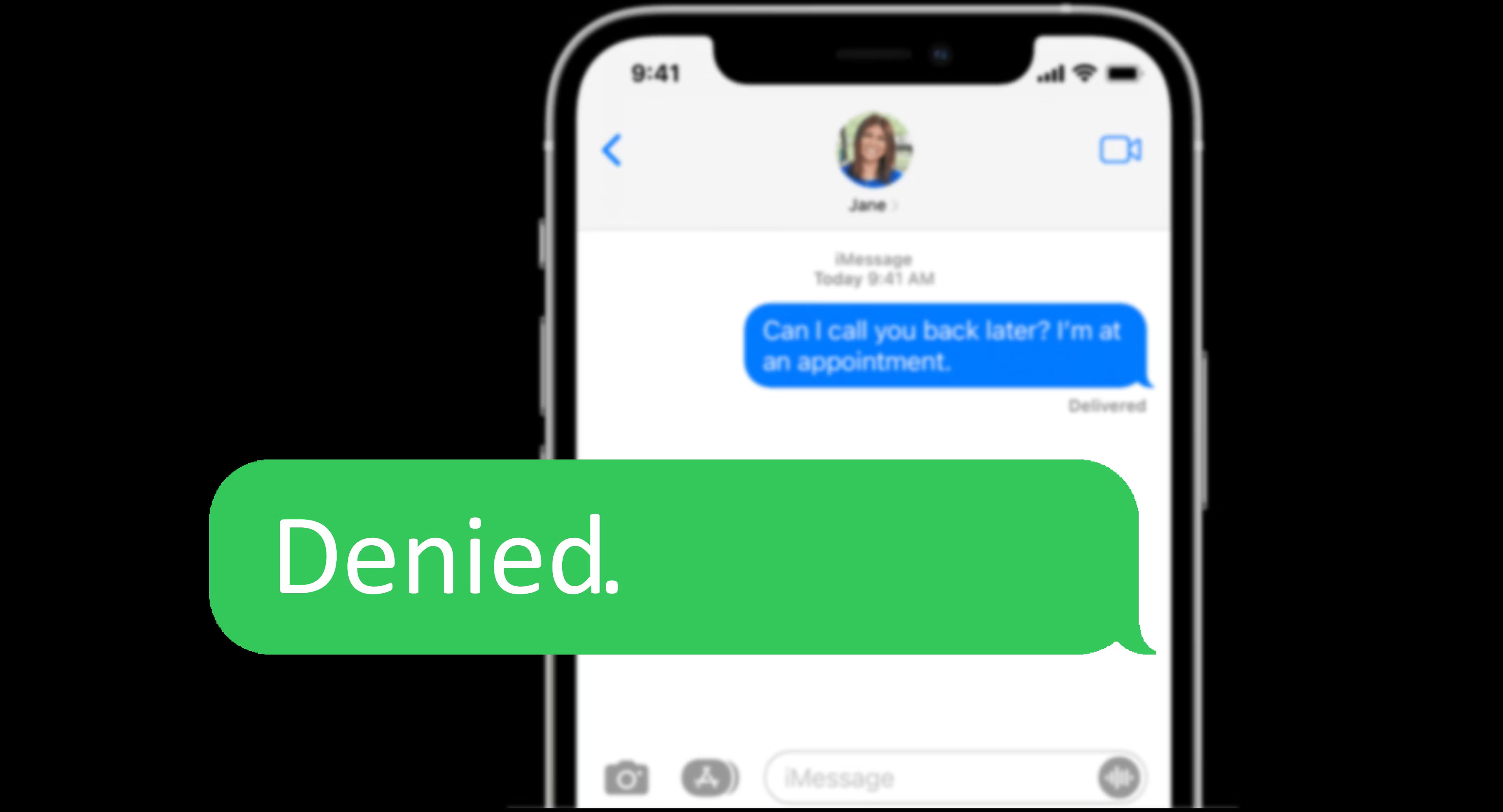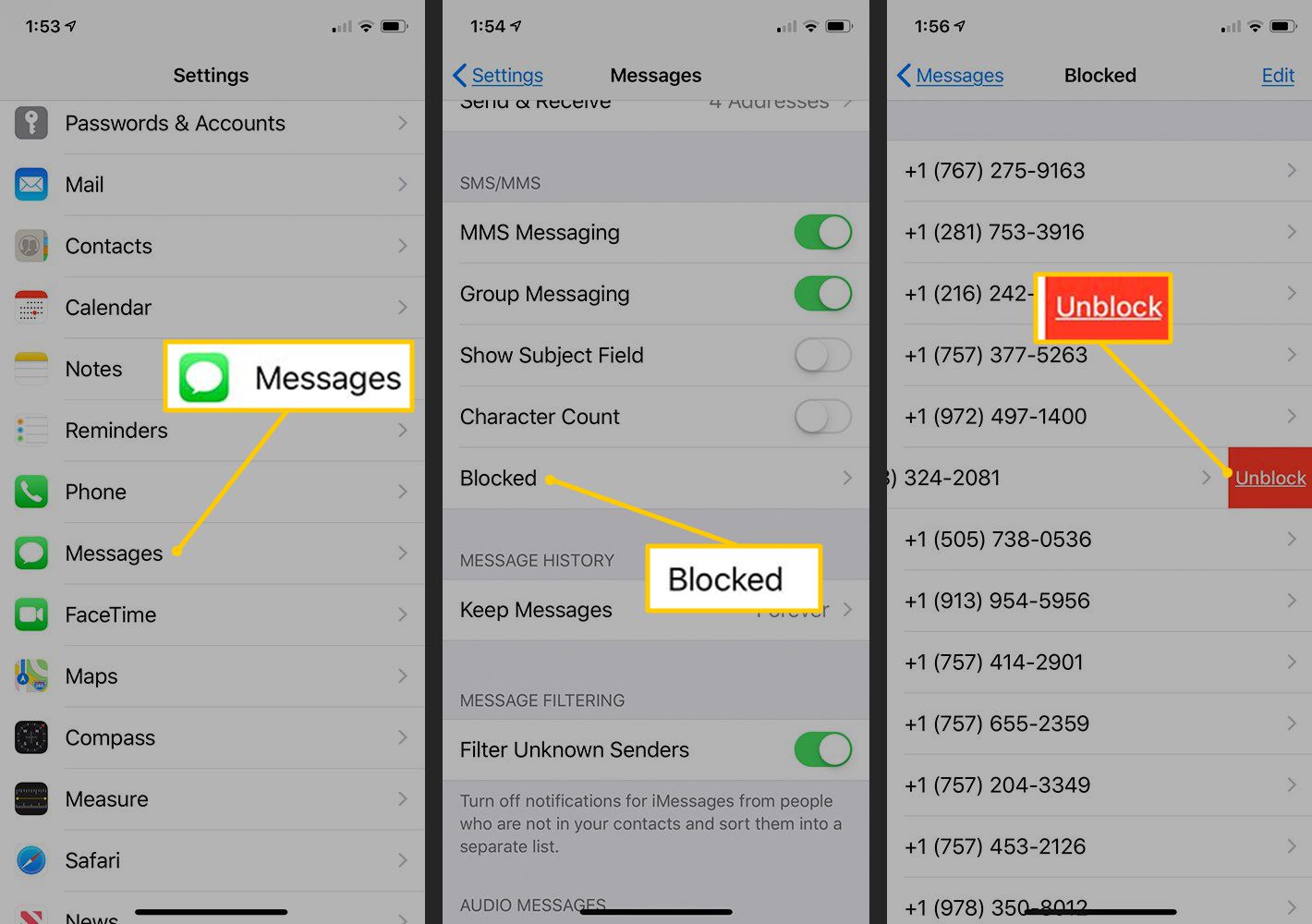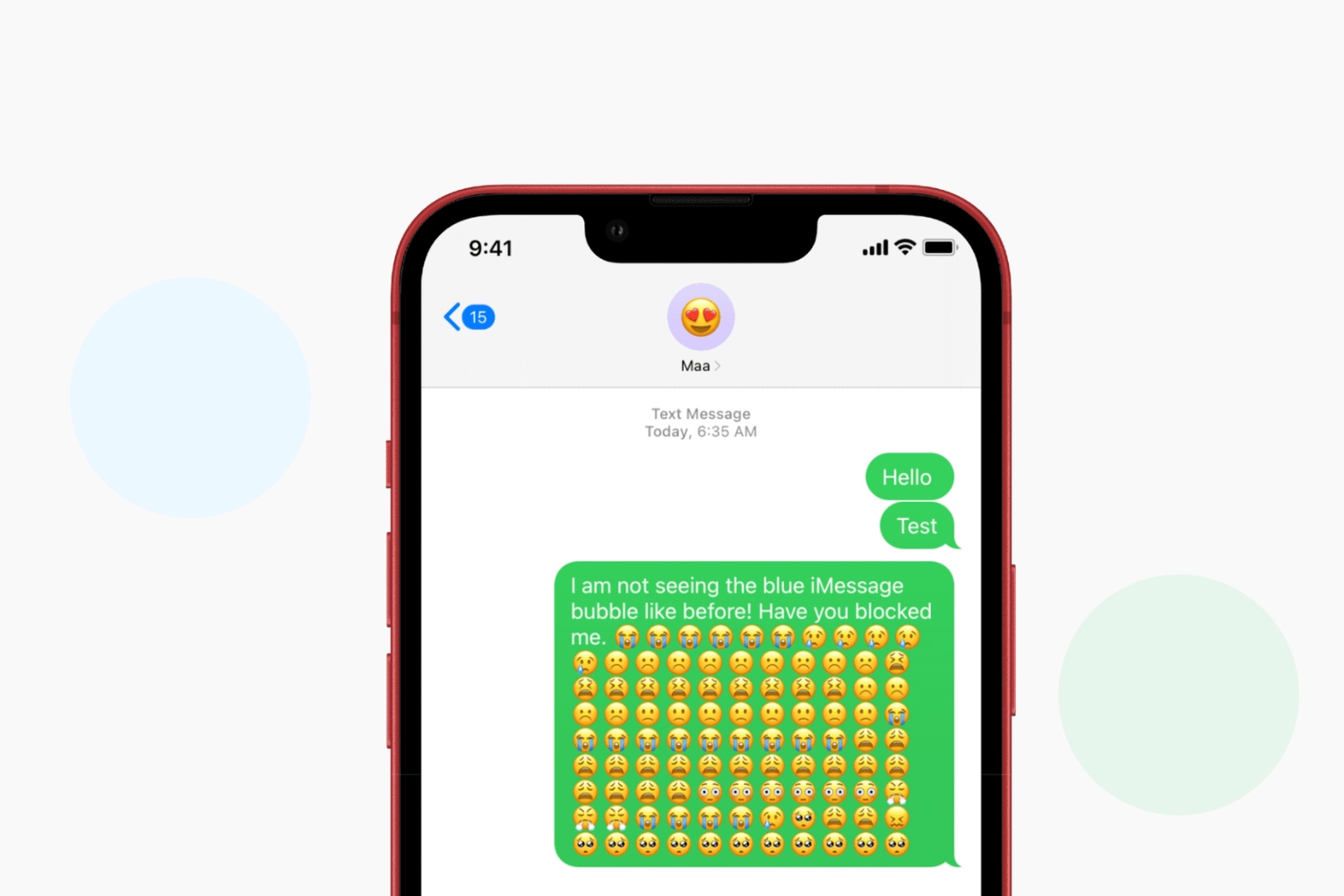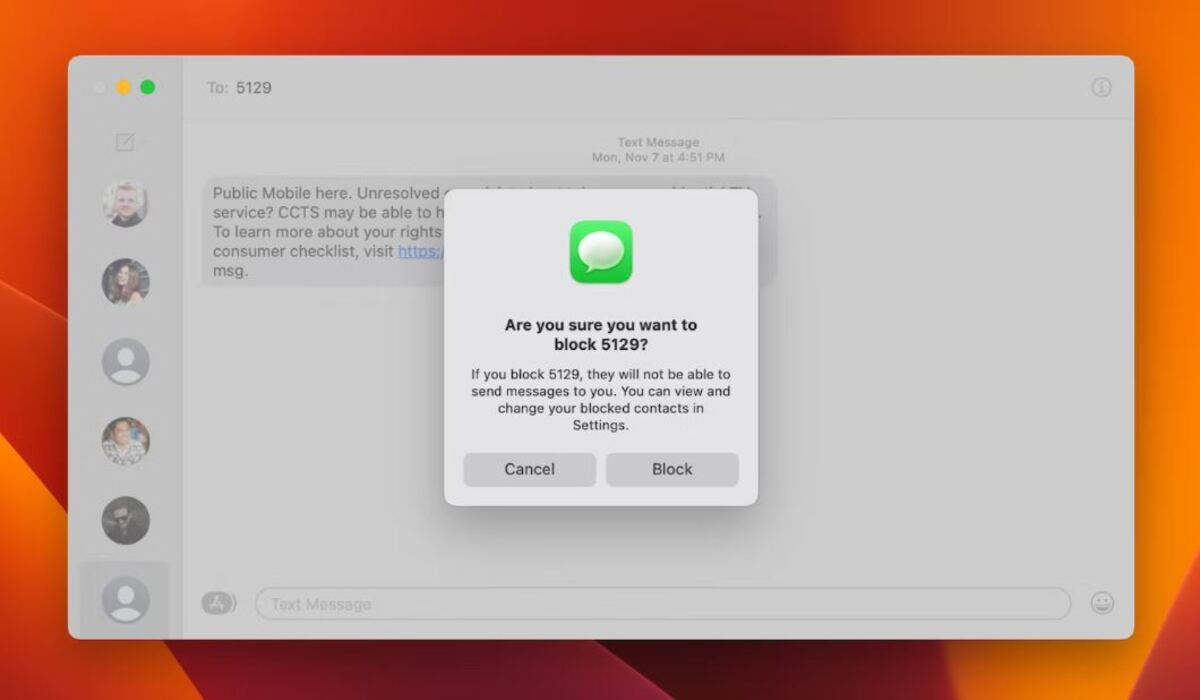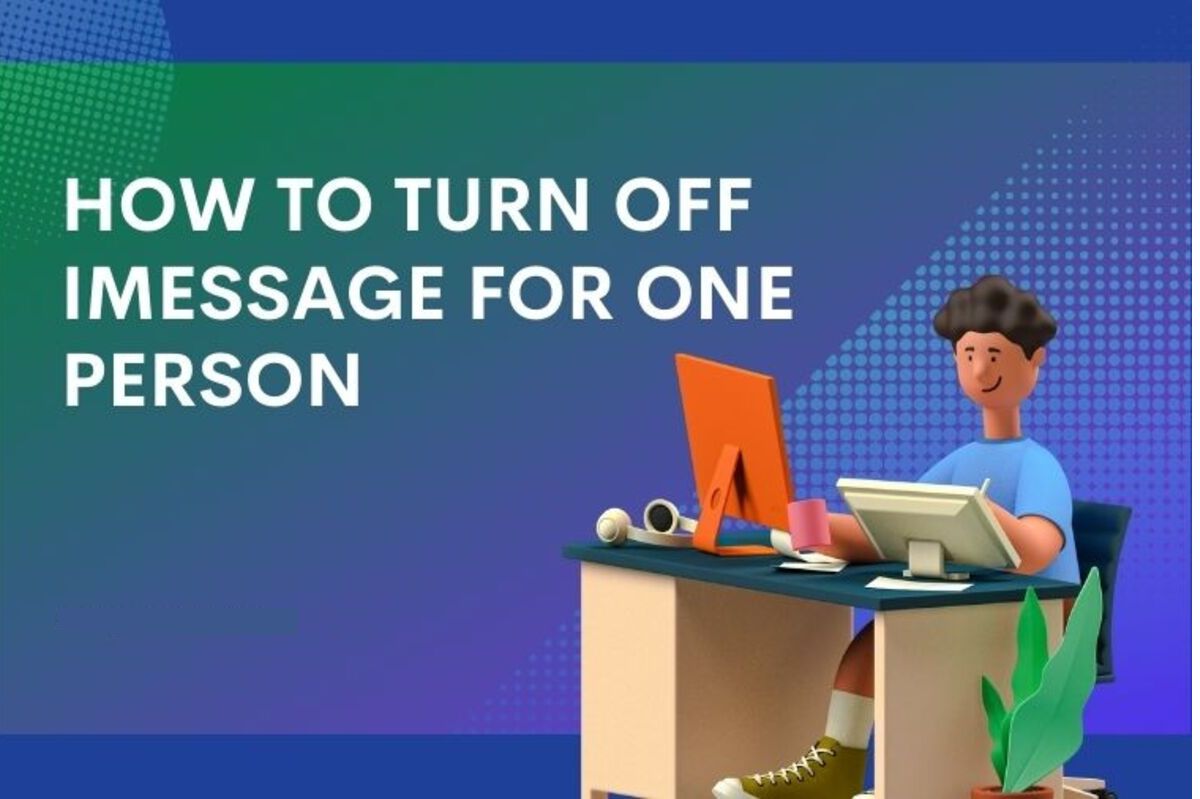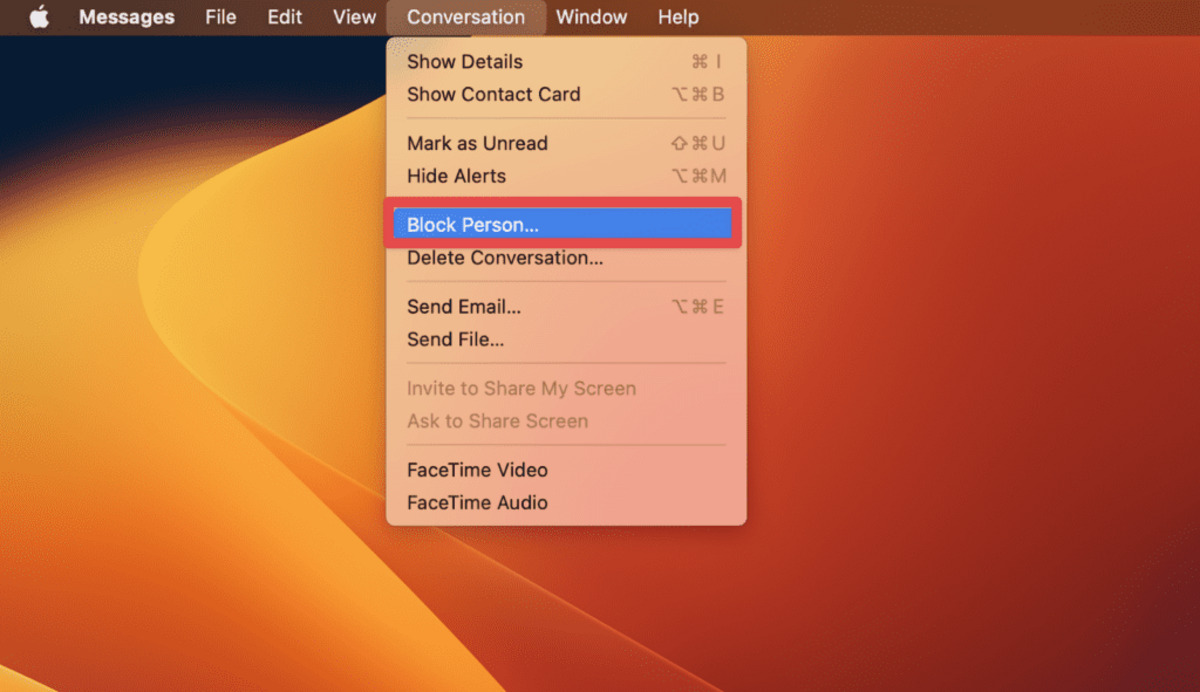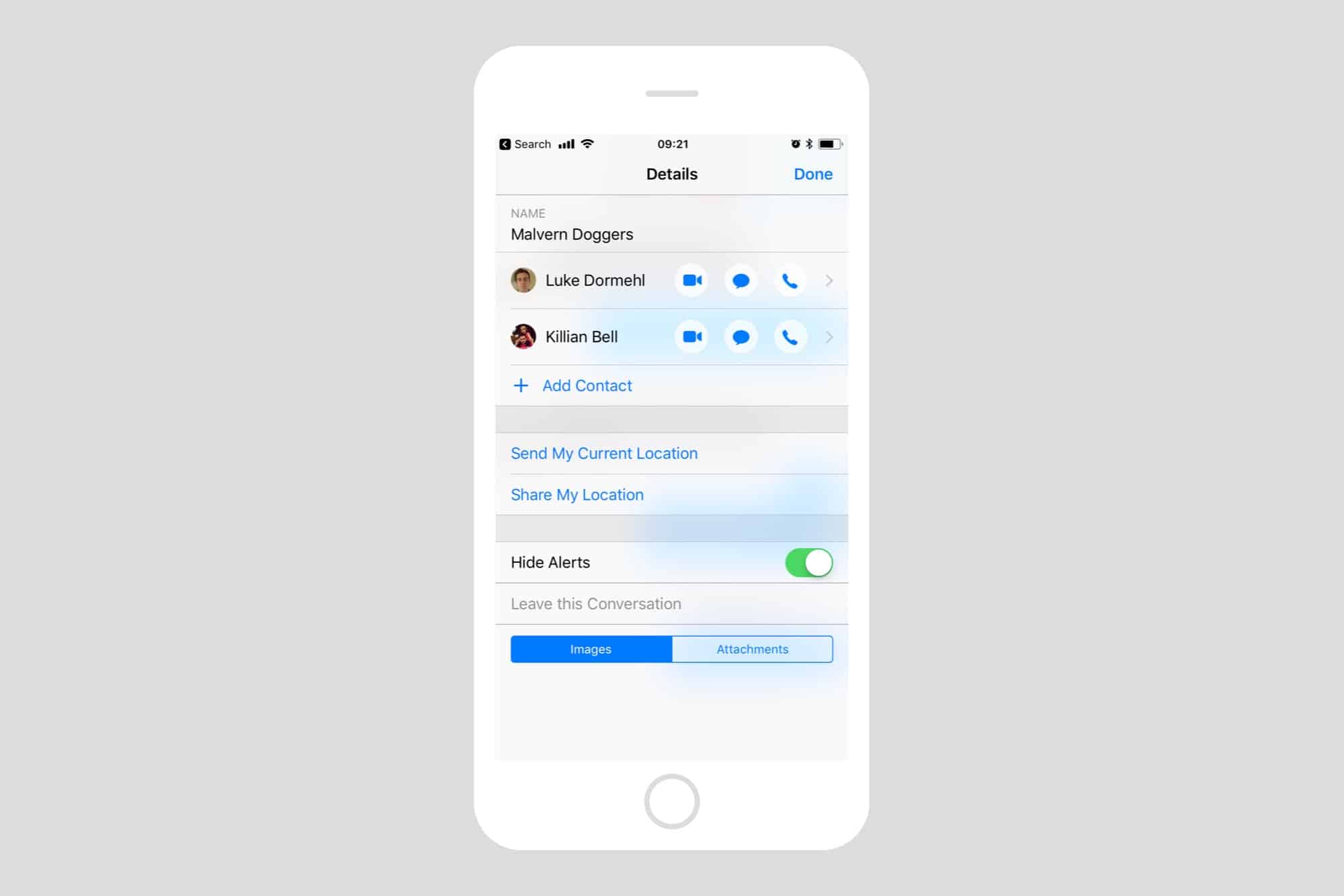Introduction
Have you ever wondered if someone has blocked you on iMessage? It’s a common question many people have when their messages go unanswered or they notice a sudden change in communication patterns. Being blocked on iMessage can be frustrating, as it cuts off your ability to contact that person through Apple’s messaging platform.
In this article, we will explore several methods to help you determine if someone has indeed blocked you on iMessage, without having to directly text them and potentially reveal your suspicions. We’ll delve into various indicators that can hint at a block, allowing you to gather the evidence you need to confirm your suspicions.
While it’s important to note that none of these methods can provide 100% certainty, they can provide valuable clues that suggest a block. By paying attention to the details and observing subtle changes, you can gain insights into the other person’s communication habits and potentially uncover whether or not you’ve been blocked.
So, if you’re ready to get to the bottom of the mystery and find out if someone has blocked you on iMessage, let’s dive into the various methods you can use to investigate.
Method 1: Send an iMessage
One of the simplest ways to determine if someone has blocked you on iMessage is to send them a message. However, it’s important to approach this method with caution as it may alert the person that you suspect they have blocked you. If you’re willing to take that risk, here’s what you can do:
- Compose a new iMessage and enter the recipient’s name or number as usual.
- Type in your message and click on the Send button.
- Observe the message status. Normally, when you send a message to someone who hasn’t blocked you, it will show as “Delivered” once it reaches their device.
However, if the message remains stuck on “Sending” for an extended period of time without showing the “Delivered” status, it could indicate that you have been blocked. Keep in mind that a poor internet connection or other technical issues could also cause delays in message delivery, so it’s important to consider other factors as well.
To further investigate, you can repeat this process with other contacts to ensure that the issue is not specific to this particular person. If your messages to other contacts are successfully delivered but continue to be stuck when sending to the suspected blocked contact, it may be a strong indication that you have been blocked.
It’s important to note that this method is not foolproof, as there could be other reasons why your message isn’t getting delivered. The person may have turned off their iMessage or their device may be offline. However, if you consistently encounter issues with this specific contact, it’s worth exploring other methods to gather more evidence.
Method 2: Check the delivery status
Another way to assess if someone has blocked you on iMessage is to check the delivery status of your messages. Normally, when you send an iMessage to someone who hasn’t blocked you, it will show a “Delivered” status once it reaches their device. However, if you suspect that you might have been blocked, follow these steps to examine the delivery status:
- Open the Messages app on your iPhone or iPad.
- Select the conversation thread with the person you suspect has blocked you.
- Look for the status indicators next to each message you’ve sent. If a message shows a solid blue or green bubble but lacks the “Delivered” label, it might suggest that your message hasn’t reached the recipient’s device.
It’s important to note that sometimes iMessage delivery statuses can be misleading and not necessarily indicate a block. The recipient’s device may be turned off, have a poor internet connection, or experience technical issues that prevent the proper delivery of messages. Therefore, it’s recommended to cross-reference this information with other methods to confirm if you have truly been blocked.
In addition, it’s also important to consider if the recipient has enabled the “Send Read Receipts” feature. With this feature enabled, you’ll see a “Read” label underneath your message when the recipient has opened and read it. However, if the feature is disabled, you won’t receive any indication of whether the person has read your message or not, making it harder to determine if you’ve been blocked solely based on the absence of “Read” receipts.
By checking the delivery status of your messages and paying attention to the presence or absence of the “Delivered” label, you can gather more clues and insights into whether or not you might have been blocked on iMessage. Remember, this method should be used alongside other techniques to gather more conclusive evidence.
Method 3: Text them using a different device
If you suspect that someone has blocked you on iMessage, you can try texting them using a different device to gather more evidence. By using an alternate device, such as a different iPhone, iPad, or even a Mac computer, you can determine if the block is specific to your device or if you have been blocked altogether.
Here’s how you can use this method to investigate:
- Grab an alternative device that is not associated with your iMessage account.
- Compose a new iMessage and enter the recipient’s name or number as usual.
- Send a message to the suspected blocked contact.
- Monitor the message status and delivery confirmation on the alternate device.
If the message is delivered and shows the “Delivered” status on the alternative device, but still doesn’t deliver or show any status updates on your main device, it could indicate that you have been blocked specifically on that device. However, if the message fails to deliver on both devices, it might suggest that you have been blocked altogether.
It’s important to note that this method is not guaranteed to provide a definitive answer, as factors like internet connection, device settings, or other technical issues could influence the message delivery. Therefore, it’s crucial to consider it as part of a larger investigation and utilize other techniques to gather more conclusive evidence.
Additionally, it’s worth mentioning that if the message gets delivered successfully on the different device, it’s still important to approach the situation with sensitivity and respect the other person’s boundaries. Being blocked may indicate that the person doesn’t want to engage in communication with you, and it’s essential to respect their decision and privacy.
By using a different device to send a message and monitor the delivery status, you can gather more insights into whether the block is specific to your device or if you have been blocked entirely. However, it’s recommended to combine this method with other techniques to obtain a more accurate understanding of the situation.
Method 4: Observe the “Read” receipts
One effective way to determine if someone has blocked you on iMessage is to pay attention to the “Read” receipts feature. When enabled, “Read” receipts allow you to see if the recipient has opened and read your messages. However, if you suspect you’ve been blocked, the absence of “Read” receipts can be a telling sign.
To observe the “Read” receipts and gather more evidence, follow these steps:
- Open the Messages app on your iPhone or iPad.
- Select the conversation thread with the person you suspect has blocked you.
- Scroll through the messages and look for the “Read” labels under your sent messages.
If you notice that the “Read” labels are consistently missing from all your messages to this person, it could suggest that you’ve been blocked. However, it’s crucial to consider other factors such as the recipient’s device settings. If they have disabled “Send Read Receipts” in their iMessage settings, you won’t receive “Read” receipts even if you haven’t been blocked.
While the absence of “Read” receipts is a strong indication of a potential block, it’s important to note that it is not a foolproof method. Technical issues, network problems, or the recipient simply choosing not to open the message can also result in missing “Read” receipts.
To further investigate, you can try sending messages to other contacts who have “Read” receipts enabled. If you receive “Read” receipts from those contacts but not from the suspected blocked contact, it strengthens the likelihood that you may have been blocked.
Remember, observing “Read” receipts should be combined with other techniques to gather more conclusive evidence. It’s also essential to approach the situation with respect and understanding, as blocking someone is a personal decision. If you suspect you’ve been blocked, it may be best to respect the other person’s boundaries and seek resolution through open and honest communication if appropriate.
Method 5: Attempt to make a FaceTime call
If you suspect someone has blocked you on iMessage, you can try making a FaceTime call to gather more evidence. This method can provide valuable insights into whether or not you’ve been blocked. Here’s how you can use this method:
- Open the FaceTime app on your iPhone, iPad, or Mac.
- Enter the name or phone number of the person you suspect has blocked you.
- Initiate a FaceTime call by tapping on the video or audio call button.
- Observe the call behavior and any indications that can suggest a block.
If you’ve been blocked, the call may not connect or ring, and you may not receive any response from the other person. However, it’s important to consider other factors that can affect a FaceTime call, such as the recipient’s device being turned off, their network connection, or other technical issues.
An additional factor to consider is whether the person has specifically blocked you from FaceTime or if they have disabled FaceTime altogether. In such cases, attempting a FaceTime call may not provide conclusive evidence of being blocked on iMessage.
To gather more evidence, you can also try making a FaceTime call to other contacts who have not blocked you. If you’re able to connect with those contacts but not with the suspected blocked person, it may indicate that you’ve been blocked on FaceTime and potentially on iMessage as well.
It’s important to approach this method with respect, as attempting a FaceTime call when you suspect you’ve been blocked may create further tension or discomfort. If you’re unsure whether the person has blocked you or if there’s a misunderstanding, it’s usually best to address the issue calmly and openly with the other person if appropriate.
Remember, using an attempted FaceTime call as a method to determine if you’ve been blocked should be used alongside other techniques to gather more conclusive evidence. Always consider the possibility of other factors that may influence the outcome of a FaceTime call.
Method 6: Look for changes in iMessage settings
If you suspect someone has blocked you on iMessage, another method to consider is looking for any noticeable changes in the person’s iMessage settings. By examining their settings, you may find clues that suggest a block. Here’s how you can use this method to gather more evidence:
- Open the Messages app on your iPhone or iPad.
- Tap on the conversation thread with the person you suspect has blocked you.
- Tap on the contact’s name or number at the top of the screen.
- Scroll down and look for any indicators that may point to a block.
Some potential changes to look out for include:
- The absence of a profile picture: If the person once had a profile picture, but it is now blank or missing, it may suggest that they have blocked you.
- No status indicator: If there is no status or online indicator next to the contact’s name, it could indicate that they have disabled this feature or have blocked you.
- Limited contact details: If you previously had access to the person’s contact information but now see limited or no contact details, it could be a sign that you’ve been blocked.
- No typing indicator: When someone is typing a message, you usually see the ellipsis (“…”) appear in the conversation. If this indicator is consistently absent, it may suggest a block.
However, it’s important to note that changes in iMessage settings can also be attributed to other factors, such as the person adjusting their privacy preferences, updating their profile, or making general changes to their device settings.
As with the previous methods, it is recommended to combine this method with other techniques to gather more conclusive evidence. It’s also crucial to approach the situation with empathy and understanding, as blocking someone is a personal decision that may reflect their boundaries or desire for privacy.
Remember, changes in iMessage settings should be used as additional clues to support your suspicions but not as definitive proof of being blocked. It is always beneficial to communicate openly and honestly with the other person if appropriate to address any concerns or misunderstandings.
Method 7: Check their profile picture and status
If you suspect that someone has blocked you on iMessage, checking their profile picture and status can provide valuable insights. By examining any changes in their profile information, you may find indications that suggest a block. Here’s how you can use this method:
- Open the Messages app on your iPhone or iPad.
- Select the conversation thread with the person you suspect has blocked you.
- Look for any changes in their profile picture and status.
If the contact’s profile picture is no longer visible, or if it appears blank or generic, it may indicate that they have blocked you. Similarly, if their status is no longer visible, or if it consistently shows as “Available” or “Offline,” it can be suggestive of a block.
However, it’s essential to consider that changes in profile picture or status can also result from other factors unrelated to a block. The person may have decided to update their profile picture, remove their status, or make privacy-related adjustments to their settings.
To gather more evidence, you can compare these changes with other contacts in your messaging app. If you can still see profile pictures and statuses for other contacts but not for the suspected blocked person, it may support the likelihood of a block.
Keep in mind that this method should be used in combination with other techniques to gather more conclusive evidence. It’s also crucial to approach the situation with respect and understanding, as blocking someone is a personal decision that may reflect the other person’s boundaries or desire for privacy.
Remember, changes in profile picture and status can provide indications, but they should not be solely relied upon as definitive proof. If you suspect you’ve been blocked, it’s wise to communicate openly and honestly with the person if appropriate to address any concerns or resolve any misunderstandings.
Method 8: Ask mutual friends for confirmation
When you suspect that someone has blocked you on iMessage, reaching out to mutual friends can provide valuable insight and potentially confirm your suspicions. By discreetly asking mutual friends about their communication with the person in question, you may gather information that supports or disproves the block. Here’s how you can use this method:
- Identify mutual friends who are likely to have communication with the person you suspect has blocked you.
- Reach out to them individually and express your concerns about potential blocking.
- Ask if they have had recent interactions with the person and if they’ve noticed any changes in communication patterns.
- Encourage them to share any pertinent information while respecting their privacy and boundaries.
By speaking to mutual friends, you can gain valuable insights into the other person’s availability, responsiveness, and overall communication habits. If multiple friends report a significant decline or lack of communication with the person in question, it may support the likelihood of being blocked.
However, it’s important to consider that mutual friends may not always have accurate information or may be hesitant to get involved. They may also have different perspectives and experiences with the person, which can influence their assessment of the situation.
Therefore, while asking mutual friends can be helpful, it’s essential to approach the information with caution and use it as one piece of the puzzle. Combine the information from mutual friends with evidence gathered from other methods to form a more comprehensive understanding.
Additionally, be mindful of how you approach mutual friends and the conversations around the topic. Respect their boundaries and understand that they may not want to get caught in the middle or be in the position of revealing sensitive information.
Remember that communication between friends should be based on trust, respect, and understanding. If you suspect you’ve been blocked, it’s important to address the issue directly with the person involved, if appropriate, to seek resolution and clarity.
Method 9: Monitor iMessage activity
Monitoring the iMessage activity of the person you suspect has blocked you can provide valuable clues to confirm your suspicions. By observing their messaging behavior and patterns, you may be able to gather evidence that supports the likelihood of being blocked. Here’s how you can use this method:
- Open the Messages app on your iPhone or iPad.
- Keep an eye on the conversation thread with the person you suspect has blocked you.
- Note any changes in their messaging activity, such as the frequency of their responses or the time it takes for them to reply (if they reply at all).
- Pay attention to any significant shifts in their communication habits, such as a sudden decrease in the number of messages or a complete halt in their responses.
If you notice a significant decrease in their messaging activity, delayed responses, or a complete lack of response over an extended period, it may indicate that you’ve been blocked. However, it’s important to consider other factors that could affect their messaging activity, such as personal circumstances, busy schedules, or other distractions.
Another factor to consider is whether the person has turned off their iMessage or switched to another messaging platform. If they’ve changed their primary method of communication, it may influence their iMessage activity and give the appearance of being blocked.
Furthermore, compare their level of engagement and responsiveness with others in your contact list. If you observe consistent engagement with other contacts but not with the suspected blocked person, it may further support the likelihood of being blocked.
It’s crucial to approach this method with patience and understanding, as messaging behavior can vary from person to person. Remember that being blocked is a personal decision, and it’s important to respect the other person’s boundaries and privacy.
While monitoring iMessage activity can provide insights, it should be used in conjunction with other techniques to gather more conclusive evidence. Direct communication with the person, if appropriate, can help clarify any misunderstandings or address concerns related to the block.
By paying attention to changes in iMessage activity and comparing it with other contacts, you can gather more information to determine if you’ve been blocked. However, always approach the situation with sensitivity and respect for the other person’s choices and privacy.
Conclusion
Determining if someone has blocked you on iMessage can be a tricky task, as there are no surefire methods that guarantee accurate results. However, by employing a combination of the methods discussed in this article, you can gather valuable clues and evidence to support your suspicions.
Sending an iMessage, checking the delivery status, texting them using a different device, observing “Read” receipts, attempting a FaceTime call, looking for changes in iMessage settings, checking their profile picture and status, asking mutual friends for confirmation, and monitoring iMessage activity are all useful techniques that can provide insights into whether or not you’ve been blocked.
It’s important to remember that none of these methods can provide 100% certainty, as there can be other reasons for the observed behaviors or changes in communication patterns. Technical issues, privacy settings, personal circumstances, or a shift in communication preferences could all contribute to the observed indications that suggest a block.
Approaching the situation with empathy and understanding is crucial throughout this process. Respecting the other person’s boundaries and privacy is important, and it may be best to have open and honest communication if appropriate to address any concerns or misunderstandings.
Ultimately, the goal is to gather enough evidence to make an informed judgment while considering all possible factors. By using a combination of these methods and considering the context of the situation, you can increase your understanding of whether or not you’ve been blocked on iMessage.







